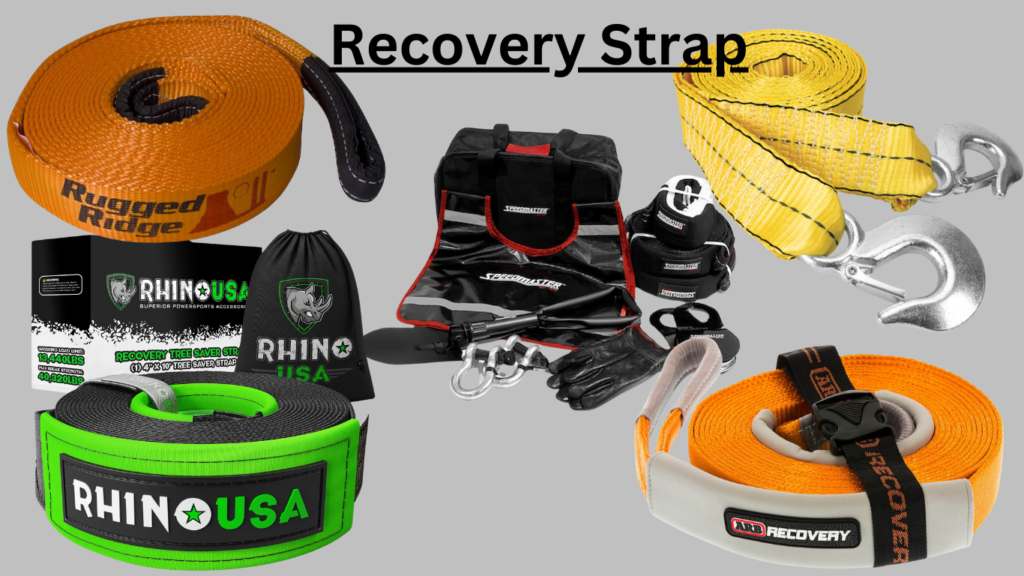When off-roading, getting stuck is almost inevitable. Whether you’re navigating through mud, sand, or snow, having the right recovery gear is essential. Two popular recovery tools are kinetic ropes and straps. Both have their strengths and weaknesses, and understanding these can help you choose the best option for your off-roading adventures.
Table of contents
What is a kinetic rope?

A kinetic rope is a type of recovery gear designed to stretch and store kinetic energy. This elasticity allows it to provide a smoother and more effective recovery, especially in challenging off-road conditions. Like mud, sand, and deep snow.
The Advantages of Kinetic Ropes
Elasticity:
Kinetic ropes stretch up to 30%, which helps reduce the shock load on both vehicles during recovery. This elasticity provides a smoother pull, reducing the risk of damage to the vehicles. Plus, it reduces the possibility of injury to the occupant of the vehicle.
Energy Transfer:
The kinetic energy stored in the rope during the pull is gradually released, making it more effective in freeing stuck vehicles. Think of it as a giant rubber band.
Durability:
These ropes are typically made from high-strength synthetic materials, making them durable and resistant to abrasion.
Disadvantages of Kinetic Ropes
Cost:
Kinetic ropes are generally more expensive than recovery straps.
Storage:
They can be bulkier and require more storage space.
Safety:
If not used correctly, the stored kinetic energy can pose a safety risk, especially if the rope breaks.
To learn more about Kinetic Ropes, read our article, “The Ultimate Guide to Kinetic Recovery Ropes.“
What is a strap?

A strap, often made from polyester or nylon, is a static strap designed for towing and recovery. It lacks the elasticity of a kinetic rope but is still effective in many recovery situation
The Advantages of the Strap
Cost:
Recovery straps are usually less expensive than kinetic ropes. So if you are on a tight budget, this could be the way to go.
Availability:
They are widely available and come in various sizes and strengths.
Simplicity:
Easier to use for straightforward towing and recovery operations.
Disadvantages of Straps
Shock Load:
The lack of elasticity means that recovery straps can create a sudden jerk when pulling a stuck vehicle, which can be hard on both the strap, the vehicle, and the occupant of the vehicle. (whip lash)
Limited Effectiveness:
In some situations, especially where more energy is needed to free a vehicle, recovery straps may not be as effective as kinetic ropes.
Wear and Tear:
They can wear out faster, especially if used frequently in harsh conditions.
Choosing the Right Tool for Your Needs
The choice between a kinetic rope and a strap depends on several factors, including the type of terrain you typically encounter, your budget, and your off-roading experience.
Having both a kinetic rope and a recovery strap in your off-roading kit gives you the flexibility to handle a wider range of recovery scenarios.
Conclusion
Both kinetic recovery ropes and recovery straps are valuable tools for off-roading enthusiasts. While kinetic ropes offer superior performance and safety in challenging recoveries, recovery straps provide a cost-effective and straightforward solution for simpler tasks. Understanding the strengths and limitations of each can help you make an informed decision and ensure you’re prepared for any off-road adventure.